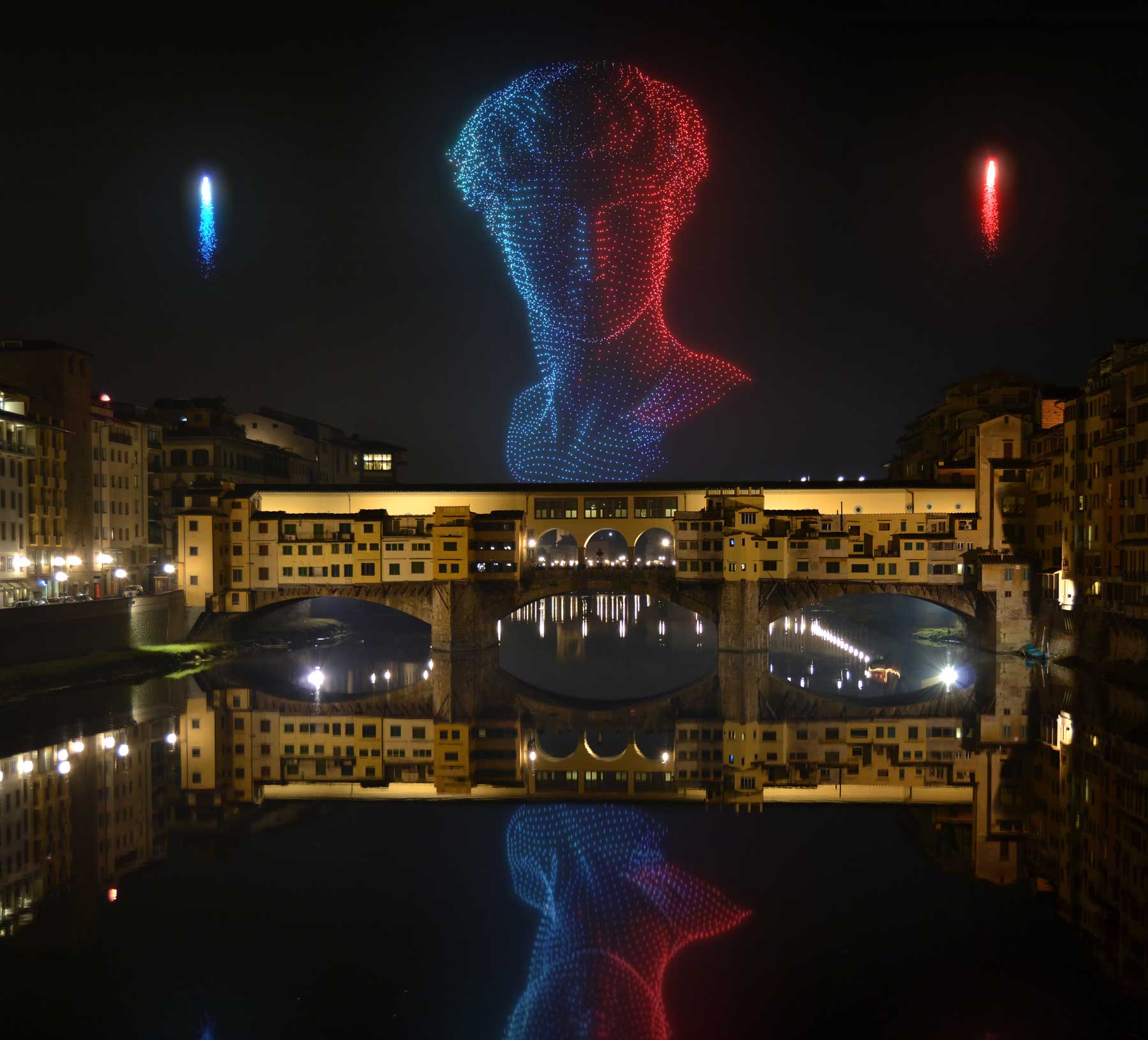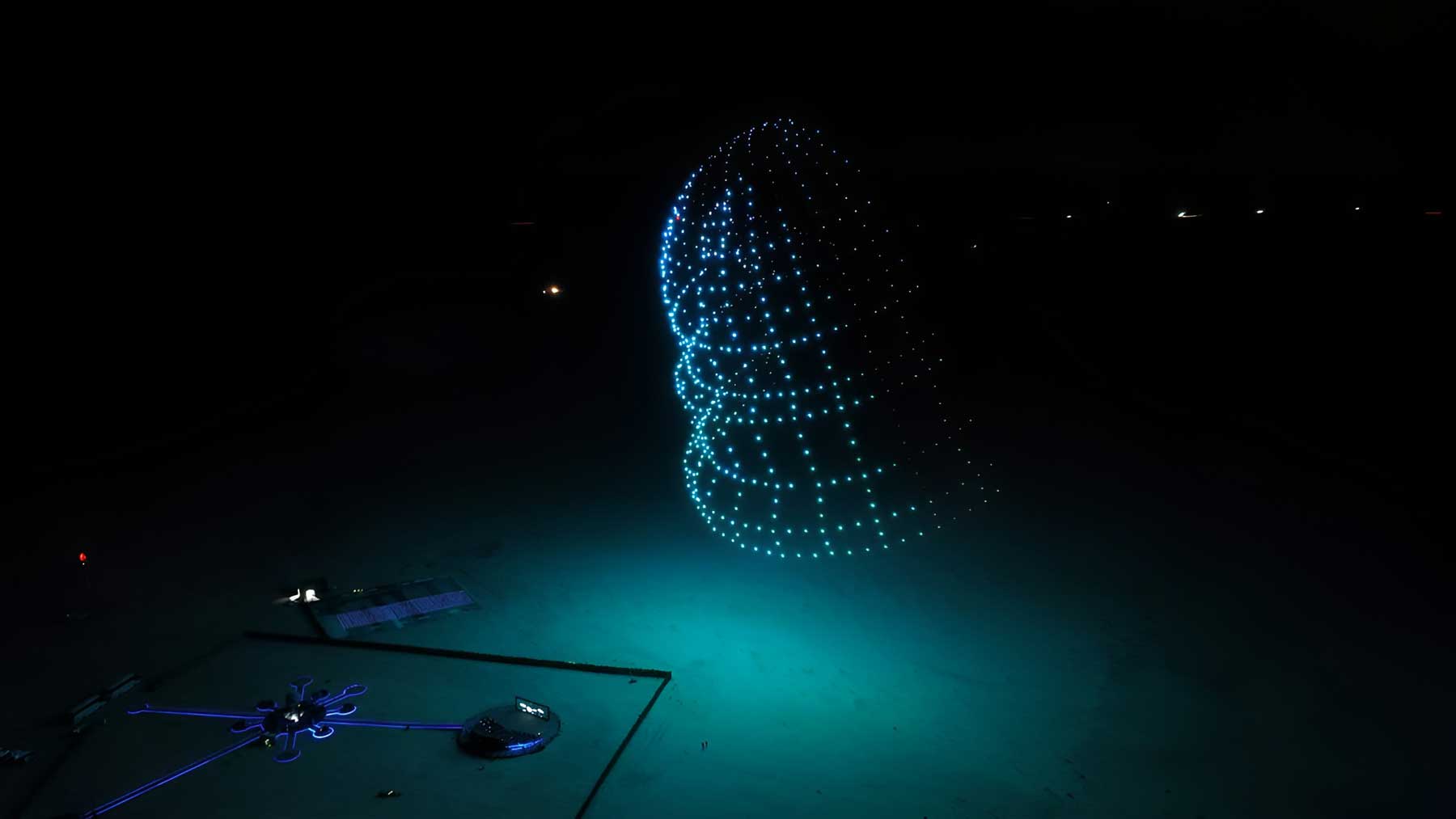In our modern world of boundless entertainment options, new art forms are continually developing, captivating audiences with their creativity and innovation. Among these brand-new forms, we can highlight drone art, which is gaining popularity worldwide. Prepare to delve into the mesmerizing realm of drone art with the Lumasky Drone Show. We will get a closer look at a phenomenon that is spreading its wings across the globe.
History of drones
- First, let’s learn more about the history of drones. Drones, or unmanned aerial vehicles (UAVs), have a rich and dynamic history that spans over a century. The origins of drones can be traced back to the mid-19th century, when visionaries like Francesco Lana de Terzi and Captain Adolf Baumgarten proposed designs for unmanned flying vehicles. However, it wasn’t until the early 20th century that these concepts started to take shape.
- The modern era of drones began to emerge in the 1960s. The first drones were originally used for military purposes, and in the 1990s, there were substantial improvements in drone capabilities. The miniaturization of components, advancements in GPS technology, and the development of reliable remote control systems greatly enhanced UAV effectiveness. Consequently, drones found applications in various sectors, such as aerial photography, agriculture, disaster management, and wildlife conservation.
- The 2010s witnessed a major turning point for drones as drones became widely available. This was the decade when the first drone light show took place. Consequently, drone art also began to develop and become more widespread.

What is drone art?
As new technologies continue to appear, the world of art is evolving in unprecedented ways. One such innovative art form is drone art, particularly in the context of drone light shows. In this context, drone art refers to the use of drones equipped with LED lights to create visual displays in the night sky. These shows harmoniously combine the precision and agility of drones with the artistic interplay of light, resulting in mesmerizing and choreographed performances. Such displays can be enhanced further by incorporating additional elements such as music, intensifying the overall experience. With the help of drones, contemporary artists can now bring to life a myriad of narratives. From immersive live fairy tales to historical reenactments, drones have unlocked boundless possibilities for storytelling and artistic expression.

How is drone art created?
At Lumasky Drone Show, we have years of experience creating drone light shows and spreading drone art throughout the globe. Drone art is created through a meticulous process that involves careful planning, choreography, and technical expertise. Here’s a step-by-step overview of how drone art is typically brought to life:
- Conceptualization: The artist or creative team begins by conceptualizing the vision for drone art. They define the artistic intent, the desired narrative, and the overall aesthetic they want to achieve.
- Pre-flight Planning: Once the concept is created, the team moves on to the pre-flight planning phase. This involves identifying the location for the drone light show, considering factors such as airspace regulations, safety precautions, and any necessary permissions required.
- Drone Selection: Based on the specific requirements of the project, suitable drones are chosen. Factors such as flight capabilities, payload capacity, and camera quality are considered to ensure the drones can execute the desired artistic vision.
- Choreography and Programming: This is a crucial step where the movements and formations of the drones are choreographed and programmed. Each drone’s flight path, speed, altitude, and lighting effects are precisely programmed to achieve synchronized movements and patterns. Advanced software and algorithms are often used to automate the process.
- Rehearsals and Testing: Prior to the actual performance, rehearsals and testing are conducted to fine-tune the choreography and ensure smooth execution. This involves both virtual simulations and real-world testing to verify the accuracy of the programmed flight paths and lighting effects.
- Performance Execution: Once the drones are prepared and the choreography is finalized, the actual performance takes place. The drones fly, following the pre-programmed instructions, executing synchronized movements and lighting effects to create the desired visual display.
- Post-production and Enhancement: After the performance, post-production work may be carried out to enhance the final output. This can involve editing the captured footage, adding some effects or music, and fine-tuning the overall presentation to create a polished and captivating final product.
Through this intricate process, drone art comes to life, pushing the boundaries of artistic expression and captivating audiences with its unique blend of technology, choreography, and visual storytelling.
Examples of drone art




